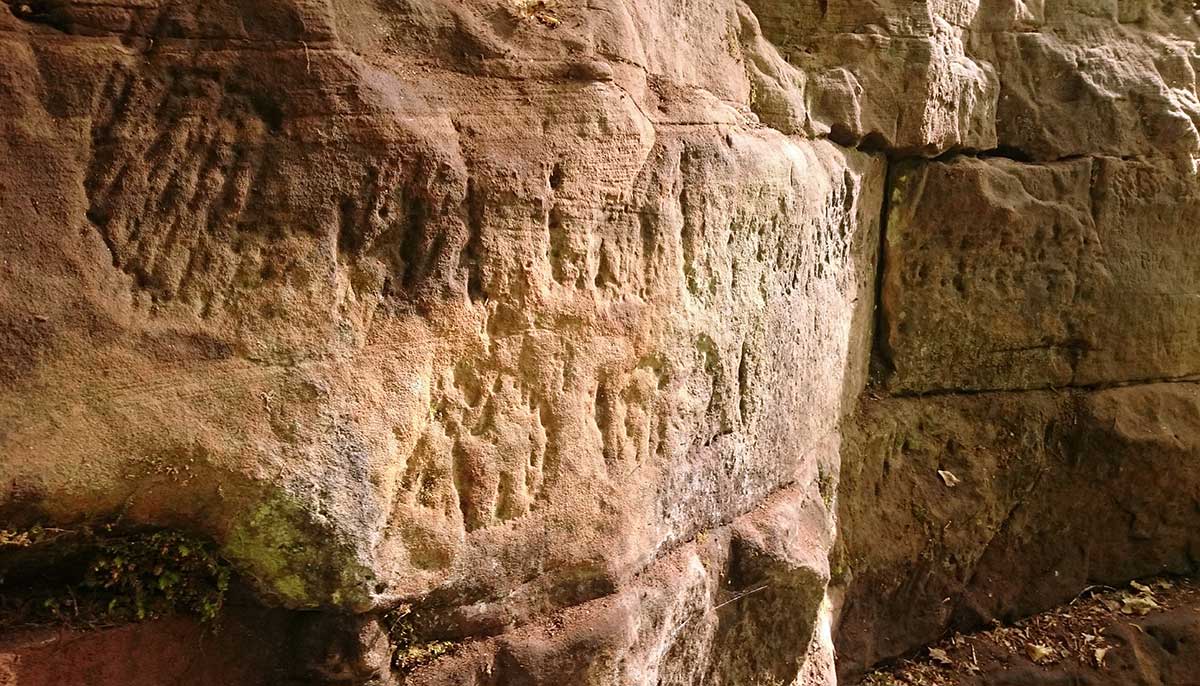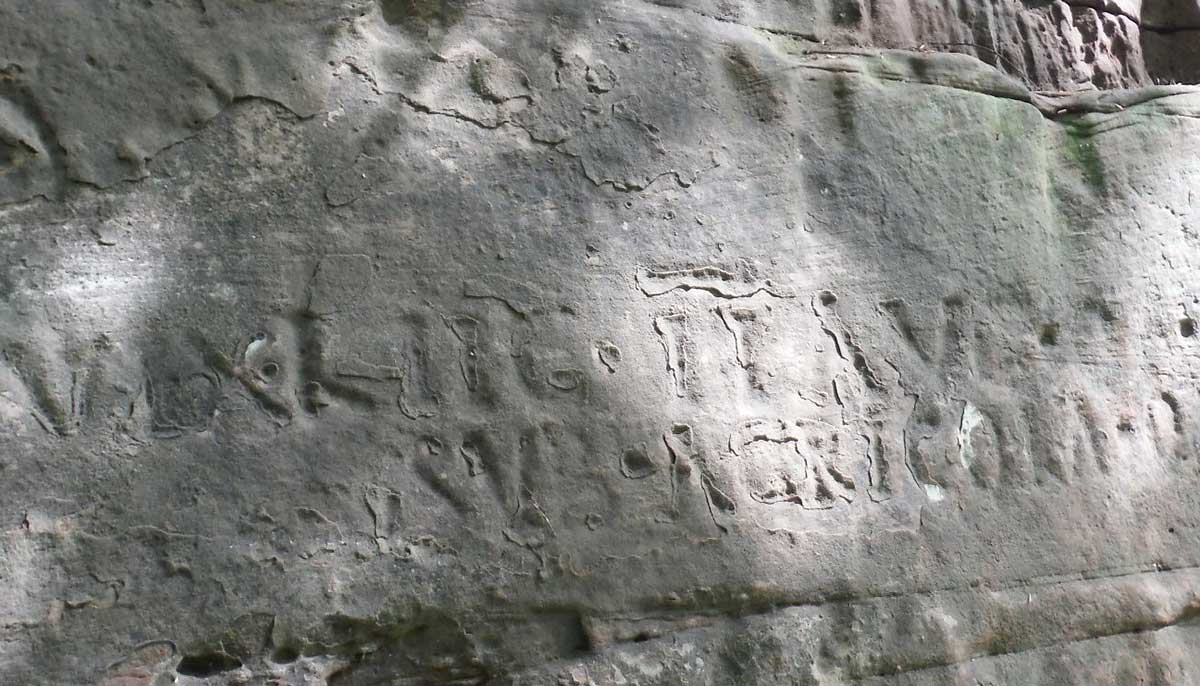roman graffiti
Roman soldiers' graffiti at Hadrian's Wall quarry to be recorded
Published on: 27 February 2019
Graffiti left by the Roman army while quarrying stone to repair Hadrian’s Wall is to be recorded by archaeologists from Newcastle University before it is lost to the elements forever.
Erosion risk
Dating from 207AD, the inscriptions in the rock were made by the Romans while they were repairing and re-building Hadrian’s Wall at a quarry near Hadrian’s Wall at Gelt Woods in Cumbria.
It was thought ‘The Written Rock of Gelt’ included a group of nine Roman inscriptions, of which only six were legible, however more are being discovered, some are new and others were previously thought to be lost. Four new written and figurative inscriptions were discovered while preparations for this new project were being made, including a relief sculpture of a Phallus – a Roman ‘good luck’ symbol.
The site is one of only a handful of Roman quarries in England to feature these kinds of inscriptions. The information recorded is of particular importance because it gives the names of men and in some instances, their rank and military units. One datable inscription ‘APRO ET MAXIMO CONSVLIBVS OFICINA MERCATI’ referring to the consulate of Aper and Maximus, offers proof of rebuilding and repair work to the Roman frontier in the early third century AD. This inscription dates to 207AD, a period when Hadrian’s Wall underwent a major repair and renewal programme.
Other inscriptions include a caricature of the commanding officer in charge of the quarrying.
The markings were discovered in the 18th century, but have suffered in recent years as a result of the gradual erosion of the soft sandstone into which they were cut. Now, archaeologists from Newcastle University will record the inscriptions before they are lost forever.
They will work with specialists in climbing rock faces to record the historic markings, gaining access to the graffiti using ropes and pulleys. After dropping 30 feet down the quarry face, they will use structure-from-motion (SfM) photogrammetry to produce a 3D record of the writings. This record will also help archaeologists to better understand the condition of the inscriptions.
Ian Haynes, Professor of Archaeology at Newcastle University said: “These inscriptions are very vulnerable to further gradual decay. This is a great opportunity to record them as they are in 2019, using the best modern technology to safeguard the ability to study them into the future.”

Digital 3D model
The collapse of a path up to the site in the early 1980’s put a halt to the public being able to view the inscriptions. This project, which is funded by Historic England, sets out to record the graffiti as well as allowing the public to once again view it via a 3D media platform.
Mike Collins, Inspector of Ancient Monuments for Hadrian’s Wall at Historic England, said: "These inscriptions at Gelt Forest are probably the most important on the Hadrian’s Wall frontier. They provide insight into the organisation of the vast construction project that Hadrian’s Wall was, as well as some very human and personal touches, such as the caricature of their commanding officer inscribed by one group of soldiers.”
The results will be made available later this year on the 3D content sharing platform, Sketchfab. This platform allows the public to gain full access to a digital 3D model of the Roman quarry inscriptions.
Historic England and Newcastle University have worked in co-operation with the landowner, Brampton Parish Council, Natural England and CAS Ltd on this recording project.
Press release adapted with thanks to Historic England




